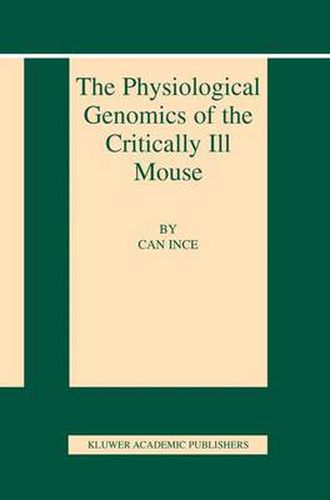Readings Newsletter
Become a Readings Member to make your shopping experience even easier.
Sign in or sign up for free!
You’re not far away from qualifying for FREE standard shipping within Australia
You’ve qualified for FREE standard shipping within Australia
The cart is loading…






This title is printed to order. This book may have been self-published. If so, we cannot guarantee the quality of the content. In the main most books will have gone through the editing process however some may not. We therefore suggest that you be aware of this before ordering this book. If in doubt check either the author or publisher’s details as we are unable to accept any returns unless they are faulty. Please contact us if you have any questions.
The physiological genomics of the cardiovascular system studies the relationship between gene and physiological (dys)function. It is a rapidly developing area of research and distinguishes itself from other areas of molecular medicine by its highly integrative nature. In this multi disciplinarian area of the physiological sciences, there is interaction between gene structure and physiological cardiovascular function as well as interactions between the different organs and their physiological compartments. The mouse has played a central role in the study of genomics due to the detailed knowledge of the mouse genome and the wide availability of genetically modified mice. In the past, the mouse had mainly been used in the area of immunology and molecular biology, and physiological interest in the mouse was scarce. As more insight has come into the structural genomics of the mouse, however, it has become increasingly important to understand the relation between gene and physiological function. With this in mind we have been organizing the Amsterdam Mouse Symposia to bring together different disciplines interested in the molecular basis of cardiovascular function (see J. of Clinical and Exp. Pharmacology and rd Physiology (2002) 29:A69-AI02 for the proceedings of the 3 Amsterdam Mouse Symposium and Basic Research in Cardiology (2000) 95:492-535 for nd the proceedings of the 2 symposium).
$9.00 standard shipping within Australia
FREE standard shipping within Australia for orders over $100.00
Express & International shipping calculated at checkout
This title is printed to order. This book may have been self-published. If so, we cannot guarantee the quality of the content. In the main most books will have gone through the editing process however some may not. We therefore suggest that you be aware of this before ordering this book. If in doubt check either the author or publisher’s details as we are unable to accept any returns unless they are faulty. Please contact us if you have any questions.
The physiological genomics of the cardiovascular system studies the relationship between gene and physiological (dys)function. It is a rapidly developing area of research and distinguishes itself from other areas of molecular medicine by its highly integrative nature. In this multi disciplinarian area of the physiological sciences, there is interaction between gene structure and physiological cardiovascular function as well as interactions between the different organs and their physiological compartments. The mouse has played a central role in the study of genomics due to the detailed knowledge of the mouse genome and the wide availability of genetically modified mice. In the past, the mouse had mainly been used in the area of immunology and molecular biology, and physiological interest in the mouse was scarce. As more insight has come into the structural genomics of the mouse, however, it has become increasingly important to understand the relation between gene and physiological function. With this in mind we have been organizing the Amsterdam Mouse Symposia to bring together different disciplines interested in the molecular basis of cardiovascular function (see J. of Clinical and Exp. Pharmacology and rd Physiology (2002) 29:A69-AI02 for the proceedings of the 3 Amsterdam Mouse Symposium and Basic Research in Cardiology (2000) 95:492-535 for nd the proceedings of the 2 symposium).